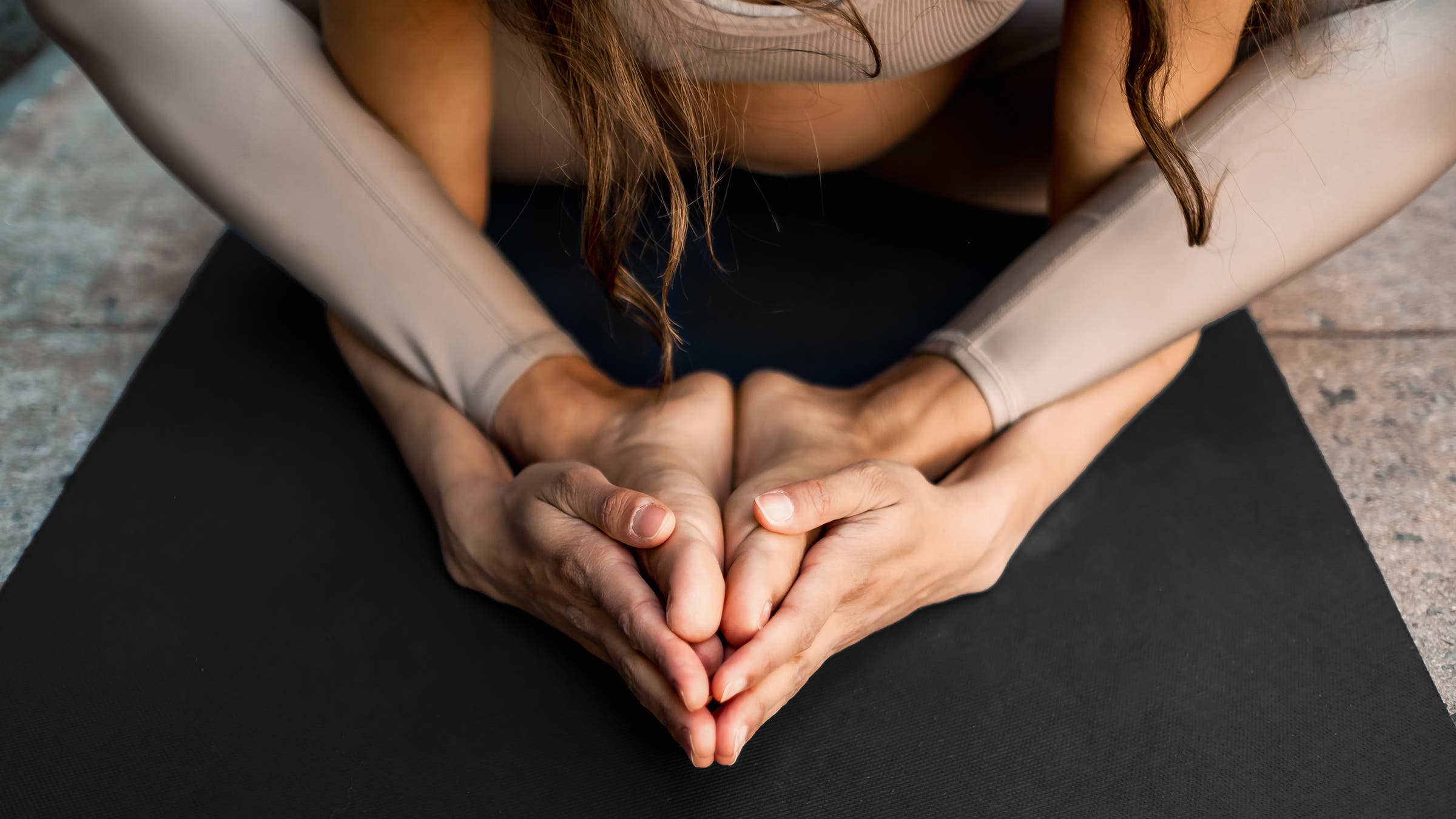This 5-Minute Yoga Sequence Will Help You Sit Still in Meditation
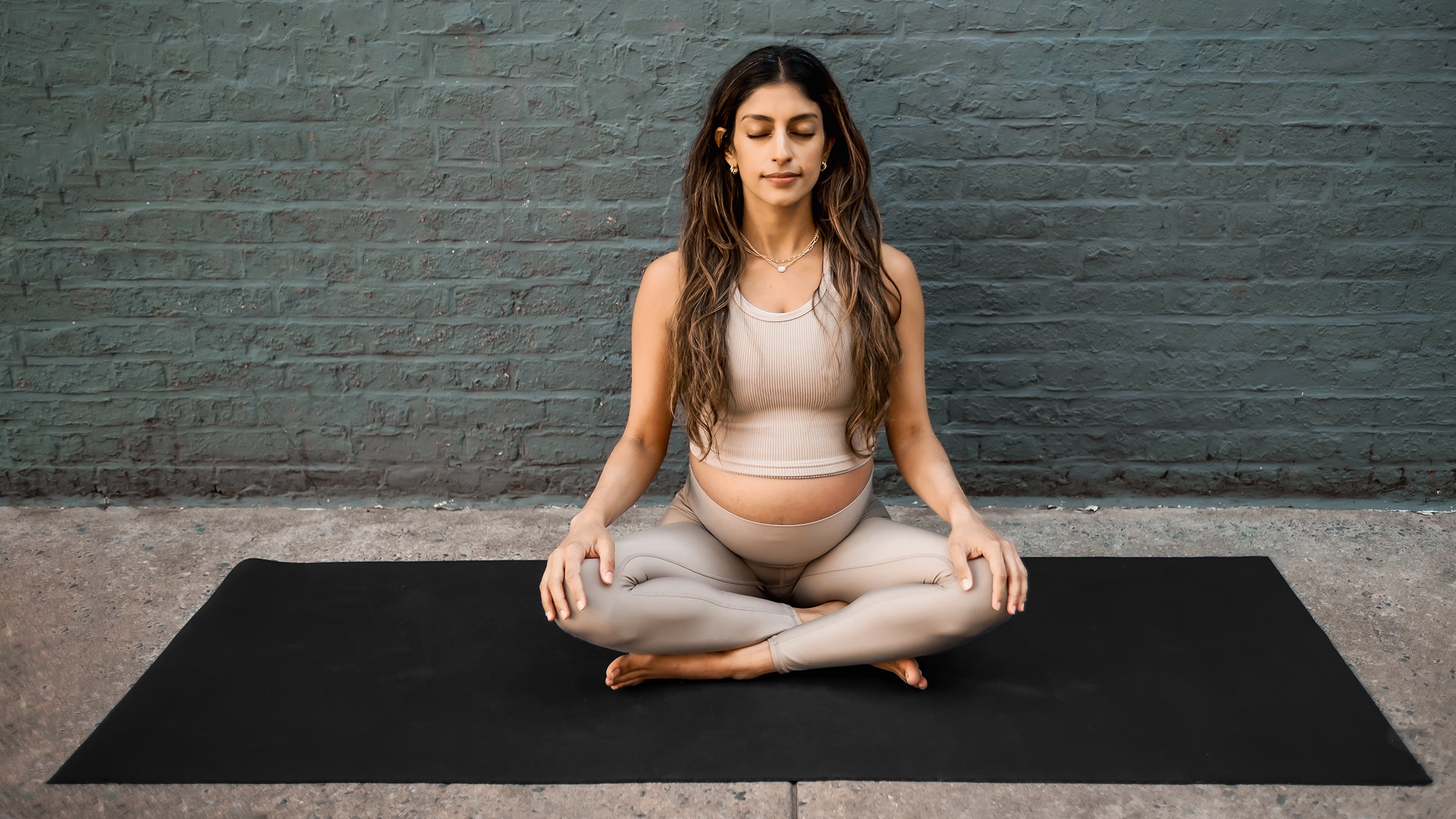
(Photo: Renee Choi)
Each morning when I sit down to meditate, I’m usually met with an internal resistance to stillness. As soon as I close my eyes, I suddenly have an itch on the top of my head that must be scratched, I can’t seem to get my positioning comfortable, and keeping my eyes shut feels like a strain.
In the Yoga Sutra, Patanjali’s only instruction for sitting in meditation is “sthira sukham asanam,” which means the posture should feel “steady and easeful.” But “steady and easeful” is a far cry from what I experience those first couple of moments.
Over the years, I’ve found that taking a few minutes to stretch and shake off some of the distractions before trying to become still is immensely helpful for my meditation practice. Movement helps wake my mind first thing in the morning and, later in the day or evening, a little stretching before sitting can temper the chaos that inevitably creeps into my consciousness.
A 5-minute sequence to help you move into stillness
The following stretches for meditation can help you work out some of the jitters before you ease into stillness. They emphasize stretching the muscles that are critical to deep breathing. They also open the hips, which is helpful if you intend to sit in Sukhasana.
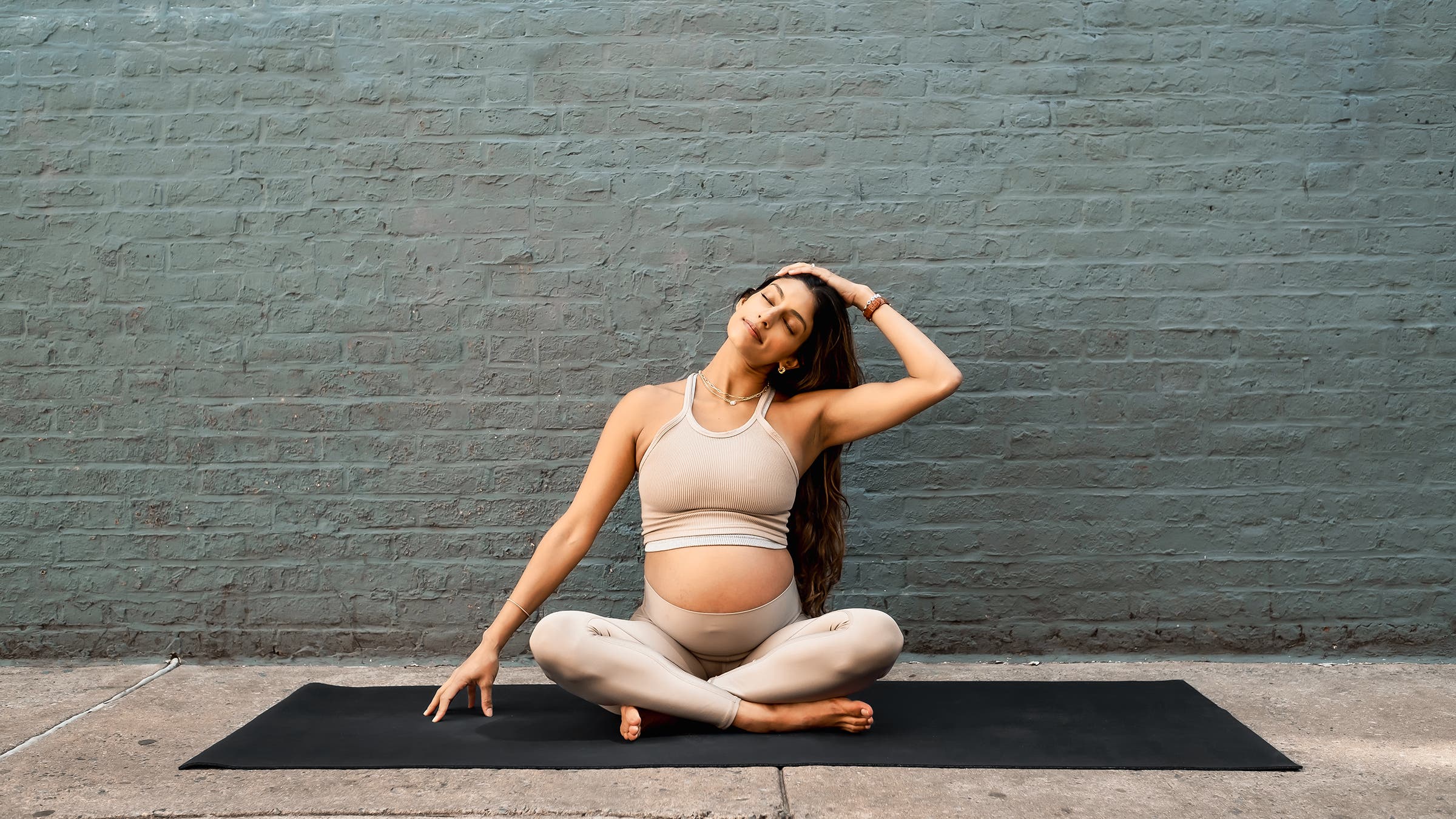
Side-to-Side Neck Stretches
How this helps you sit in meditation: Neck stretches can feel especially nice in the morning or after a long day of looking at a screen as they help us release a stagnant posture. When you set yourself up in your meditation seat, incorporating a slight Jalandhara Bandha by tilting your chin slightly downwards can help regulate blood flow and breath flow. Thus, giving your neck some time to open up can help prep your body for your seat.
How to: Sit in Sukhasana (Easy Seat) or Vajrasana (Thunderbolt Pose with your toes tucked under and your seat on your heels or on a block). Place your right fingertips on the ground alongside your right hip and gently place the palm of your left hand on your head just above your right ear. Breathe in and sit up tall, as if you’re pressing your head into your hand. Breathe out and lean your head to the left, without pressing on your head or pulling on your neck. Allow the natural weight of your hand to increase the stretch. Remain in this neck stretch for 3-5 breaths before switching sides.
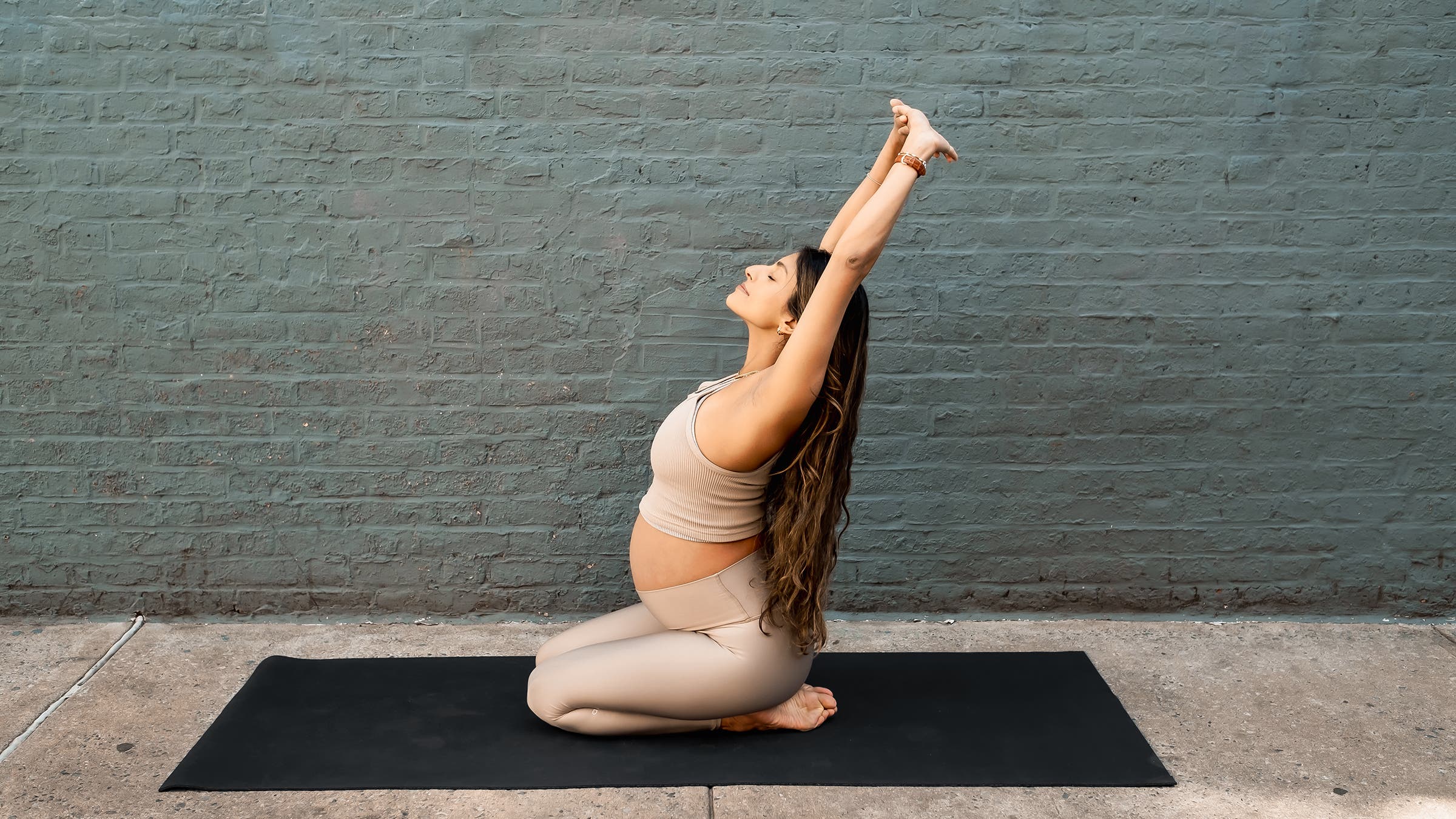
Seated Cat-Cow
How this stretch helps you sit in meditation: We often think about our breath as a front body motion, but we also have a significant amount of lung capacity in our backs. This stretch helps you open up the lungs not just on the front but also the back and sides.
How to: Sit in Vajrasana and interlace your fingers with the opposite thumb in front as in the previous stretch. Stretch your arms overhead and turn your palms to face upwards. Take a breath in and arch your upper back as you press your palms to the sky. As you breathe out, push your palms forward and round your spine as you bring your hands towards the ground. Repeat for 3 to 5 breath cycles. Take in the sense of spaciousness this creates in your back body and your lungs.

Tabletop Cat–Cow
How this stretch helps you sit in meditation: Similar to the seated version of the stretch, kneeling Cat-Cow stretches are great for opening up the front and back body and priming the body for breathing. In addition, the movements of the hips and pelvis in these shapes are a nice counter action to the hips being still in meditation.
How to: From seated, come to all fours with your hands underneath your shoulders and your knees underneath your hips. Spread your fingers wide and press your palms down. Inhale as you lower your belly and lift your sit bones, chest, and gaze towards the sky. Exhale and ground your hands, pull your ribs into your back body, and drop your gaze towards your navel. Repeat for 3 to 5 cycles. Focus on the opening of the chest and the upper back muscles.

Adho Mukha Svanasana (Downward-Facing Dog Pose)
How this stretch helps you sit in meditation: Downward-Facing Dog is great for opening and strengthening the entire back body—jittery legs included. Because your head is lower than your heart, the pose is also an inversion, which means it’s energizing and helps increase blood circulation.
How to: From Tabletop, tuck your toes and lift your hips up and back to Downward-Facing Dog. Bend your knees slightly so that you can focus on lengthening your back. Spread your fingers and toes wide and evenly distribute your weight between your hands and feet.
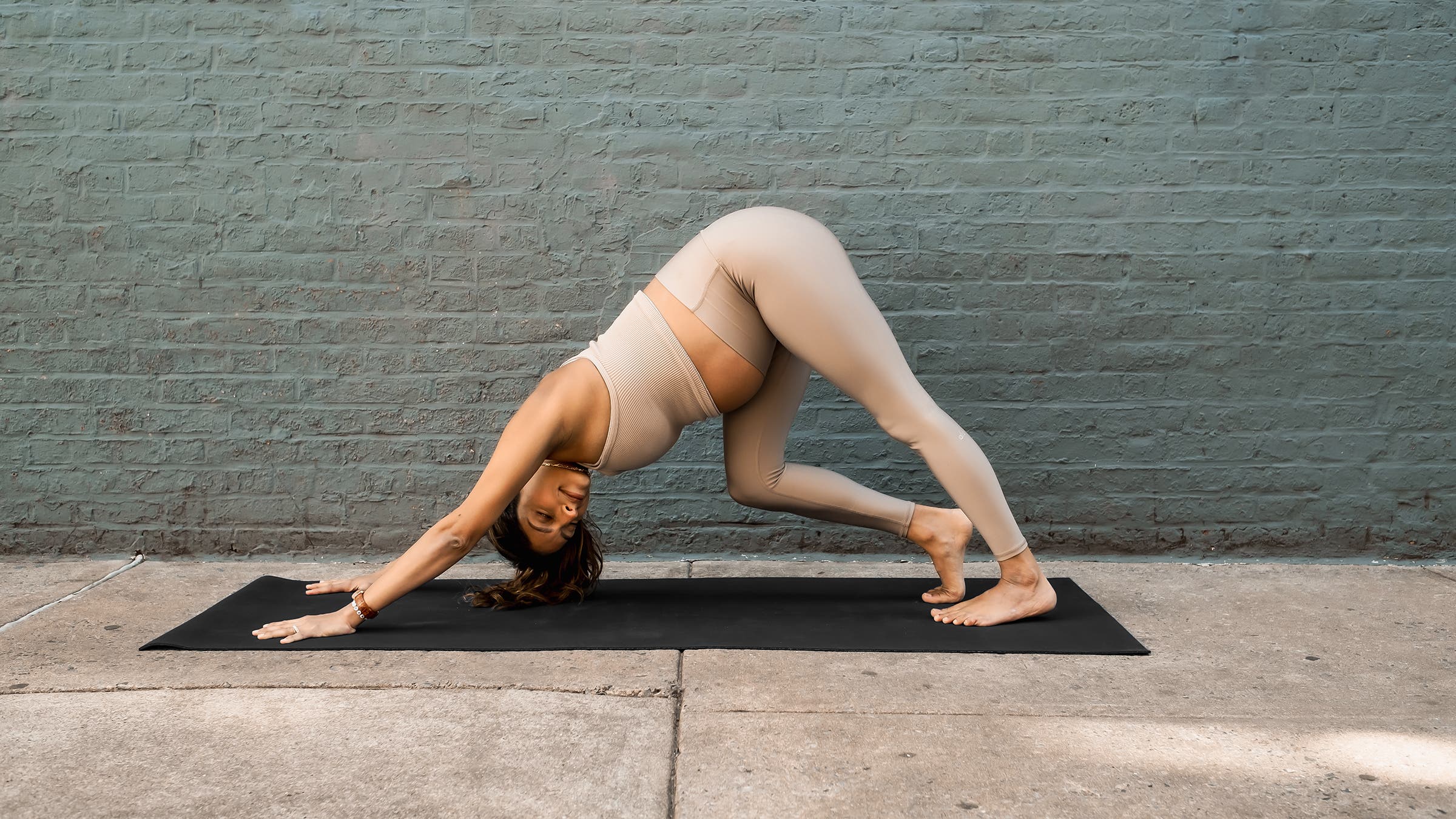
Let your Down Dog be exploratory, as if you’re having a conversation with your body to understand what needs your attention today. Turn your inner arms upward and relax your shoulders. Draw your ribs in toward your back and lift your sitting bones toward the sky. Counter the arch in your low back by moving your tailbone toward your pubic bone. With the knees slightly bent, press your thigh bones back toward the wall behind you. Soften your gaze and drop your head so that your upper arms line up with your ears. Walk it out, bending one knee and straightening the other. Breathe steadily into the entire length of your back body for 5–10 breaths.
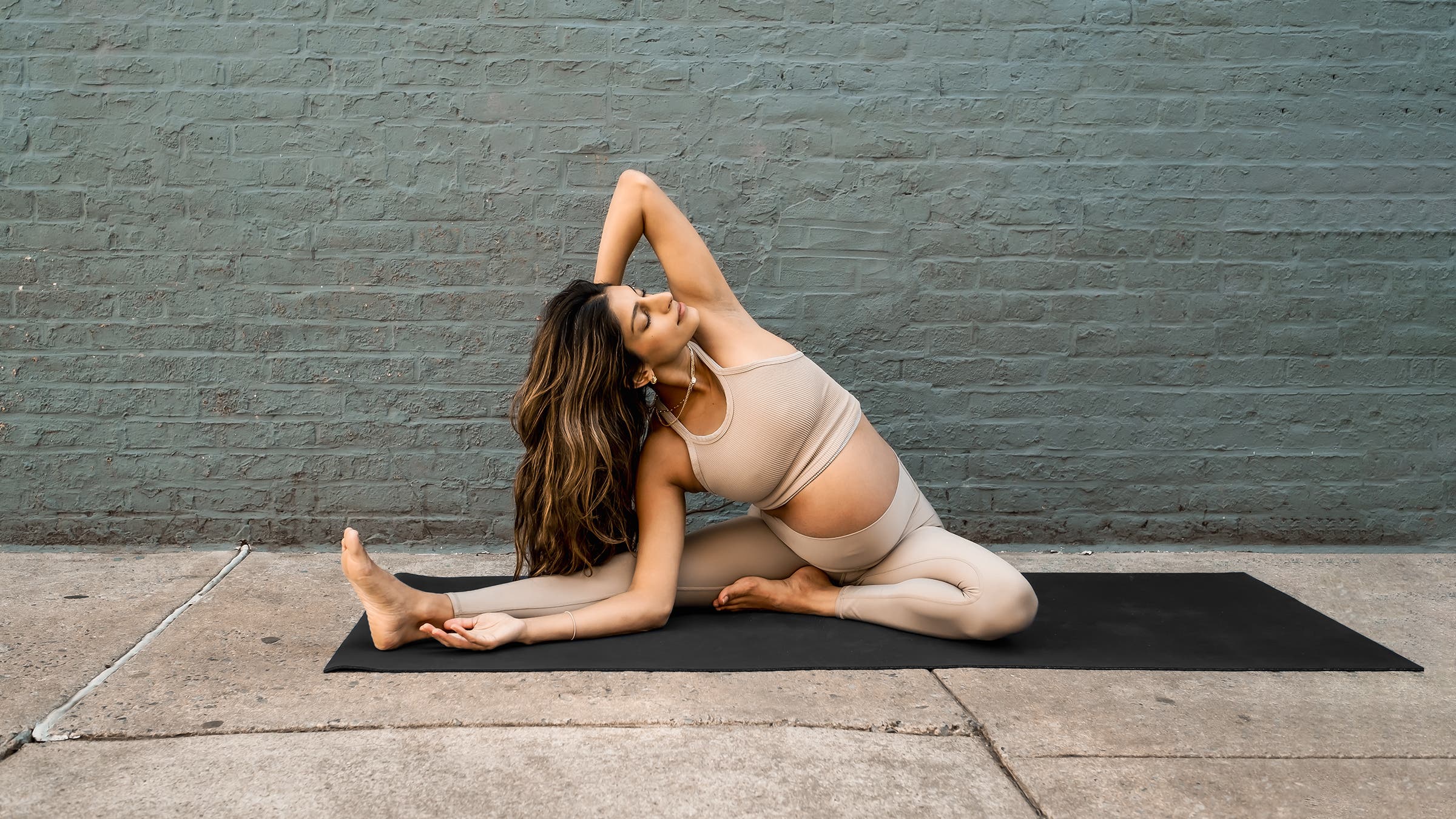
Parivritta Janu Sirsasana (Revolved Head-to-Knee Pose)
How this stretch helps you sit in meditation: This pose is great for opening up our intercostal muscles—the muscles between your ribs—and to help move your chest as you breathe. In addition, Parivritta Janu Sirsasana stretches your back, shoulders, hamstrings, and hips.
How to: From Down Dog, lower your knees and come to a seated position with your legs stretched out in front of you. Bend your left knee and place the bottom of your left foot against the inseam of your right thigh, letting your left knee fall to the side. Flex your right foot and place your right forearm on the inside of your right leg, lengthening through the side you’re bending toward. You can use a block under your forearm if you need to bring the ground closer to you. This will help you maintain length in your side and back.
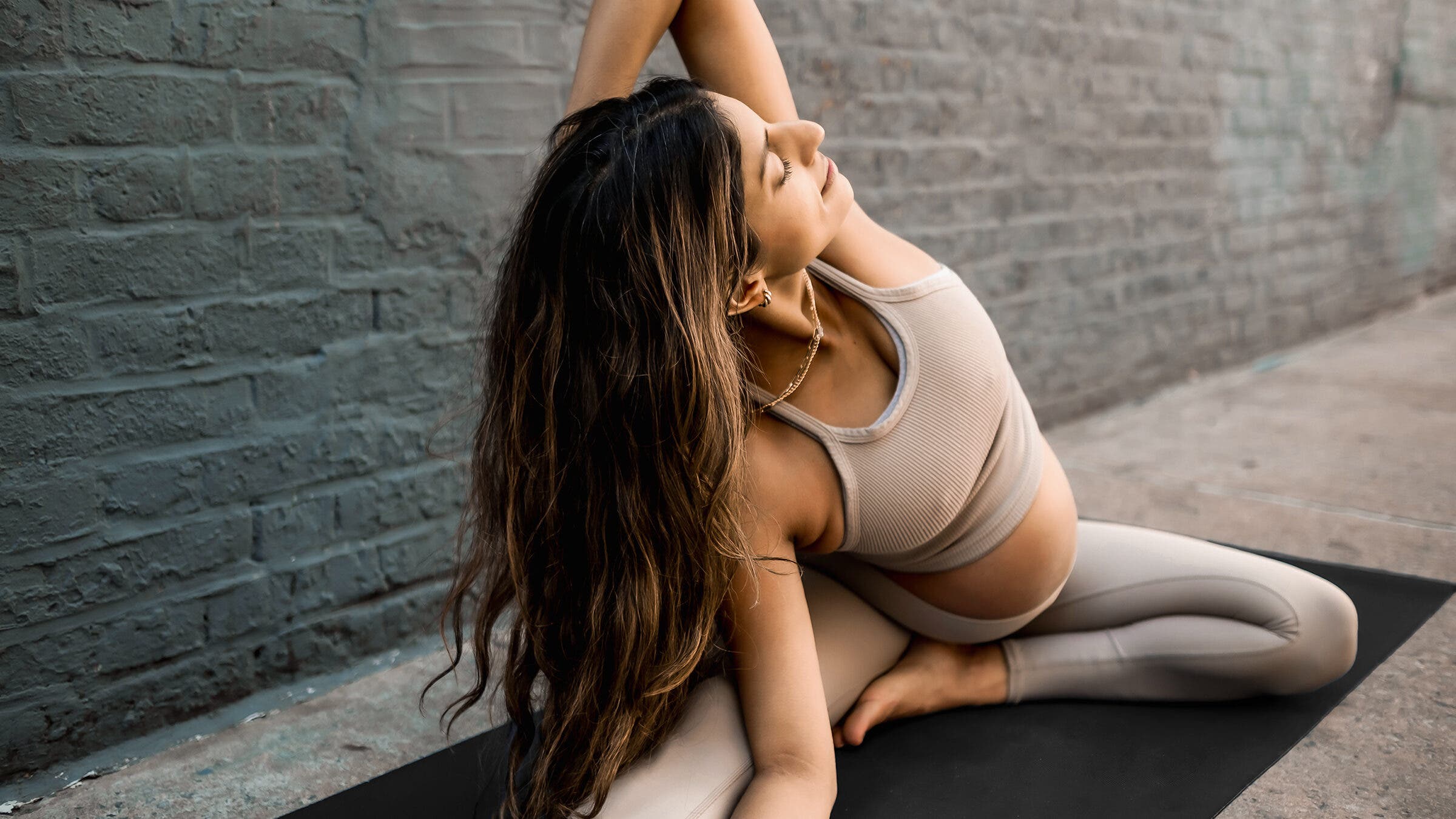
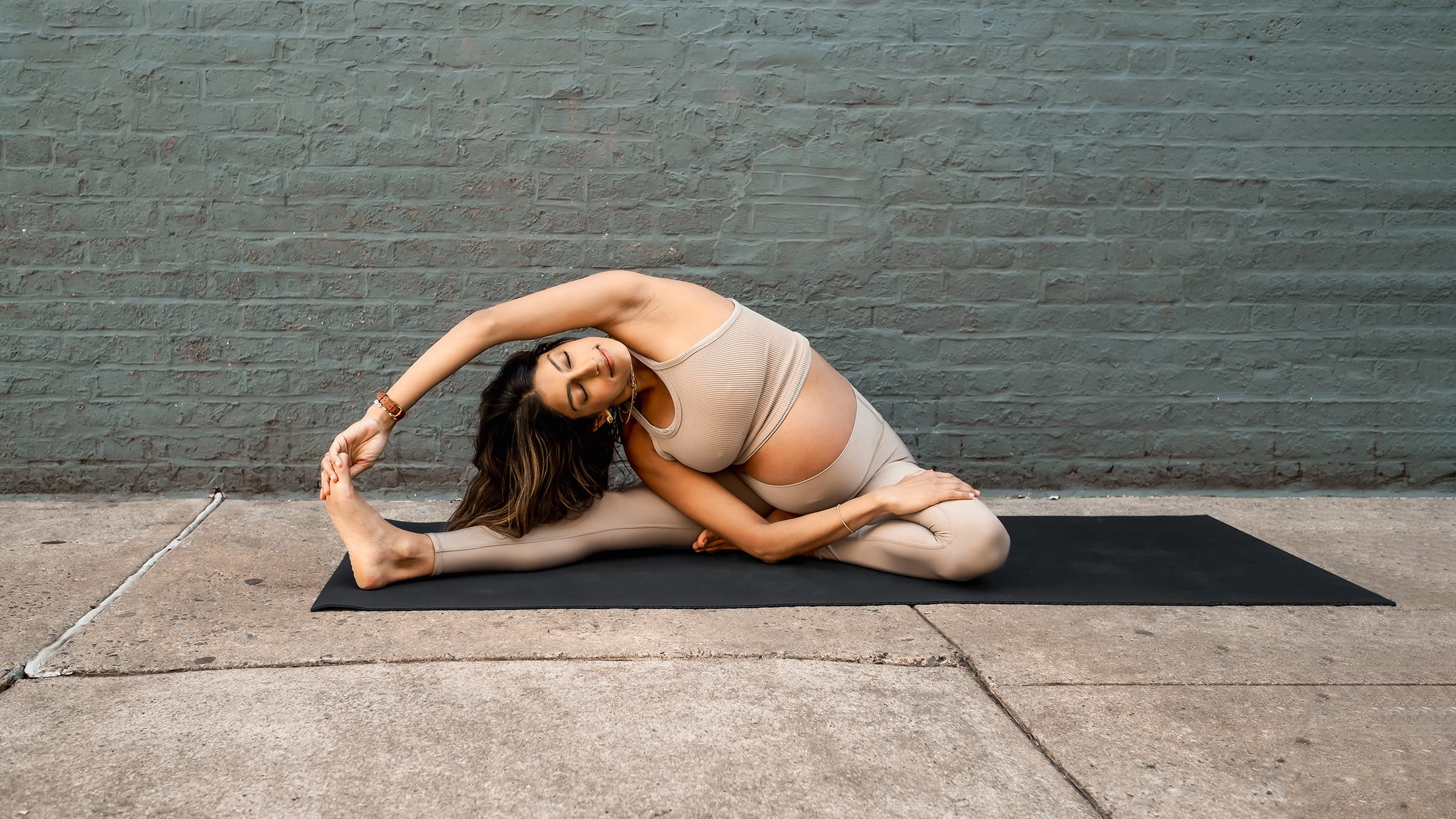
Wherever you are, breathe deeply into your right side for 3-5 breaths. To come out of this shape, breathe in and rise up, exhale to land in an upright seat. Turn your left knee in and straighten your leg. Repeat on the other side.
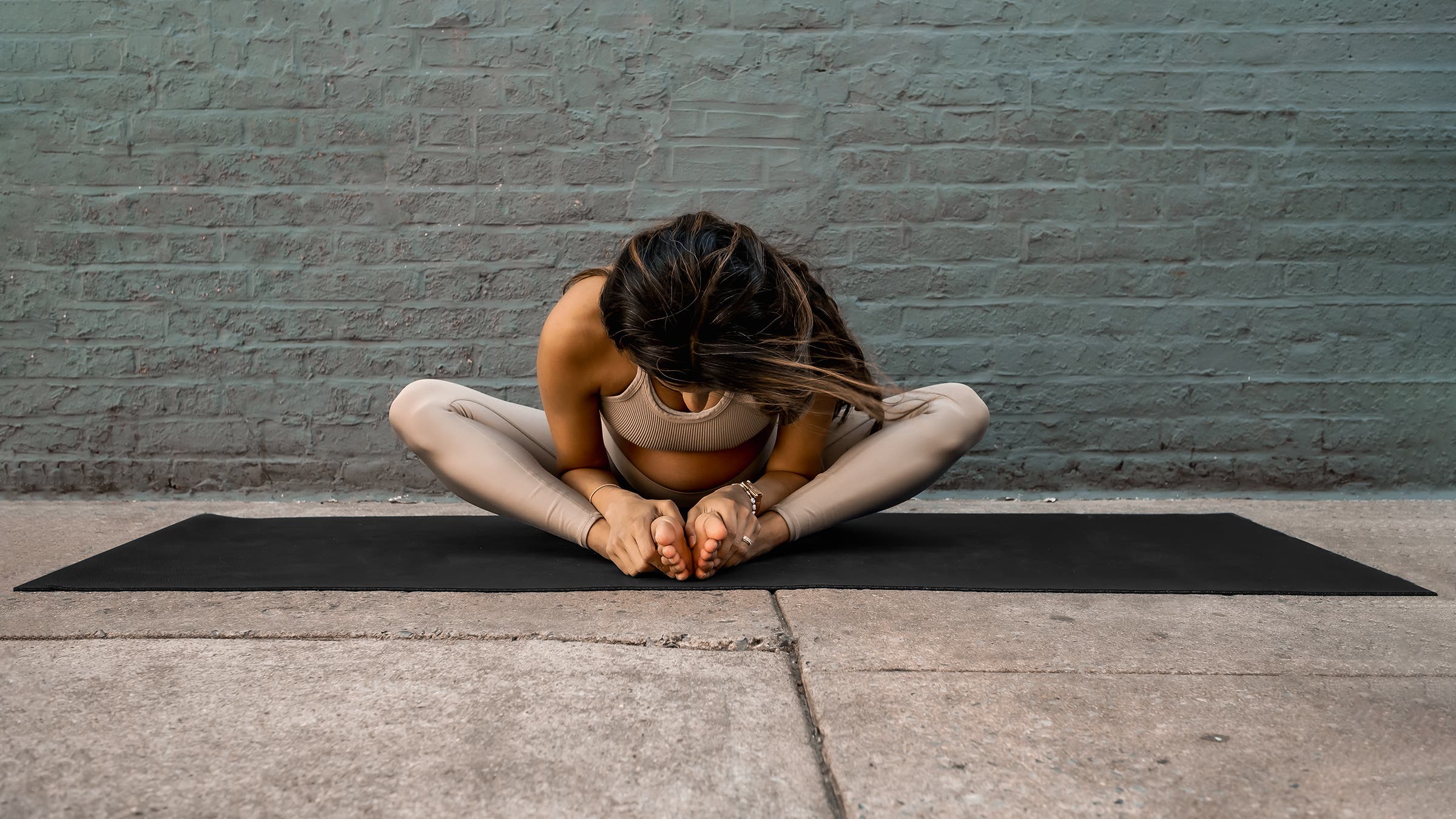
Baddha Konasana (Bound Angle Pose)
How this stretch helps you sit in meditation: This pose is great for opening your hips, lower back, inner thighs, and even your ankles—all areas that may tend to experience discomfort when you’re sitting in a steady seat. The forward fold variation described above is calming for your central nervous system, a great precursor to sitting for meditation!
How to: From seated, bring the bottoms of your feet together and widen your knees. Slide your feet a comfortable distance from the pelvis. Take your hands to the outsides of your feet. Breathe in to sit tall and broaden your chest; breathe out to lengthen your chest forward and then down to fold with a flat back.
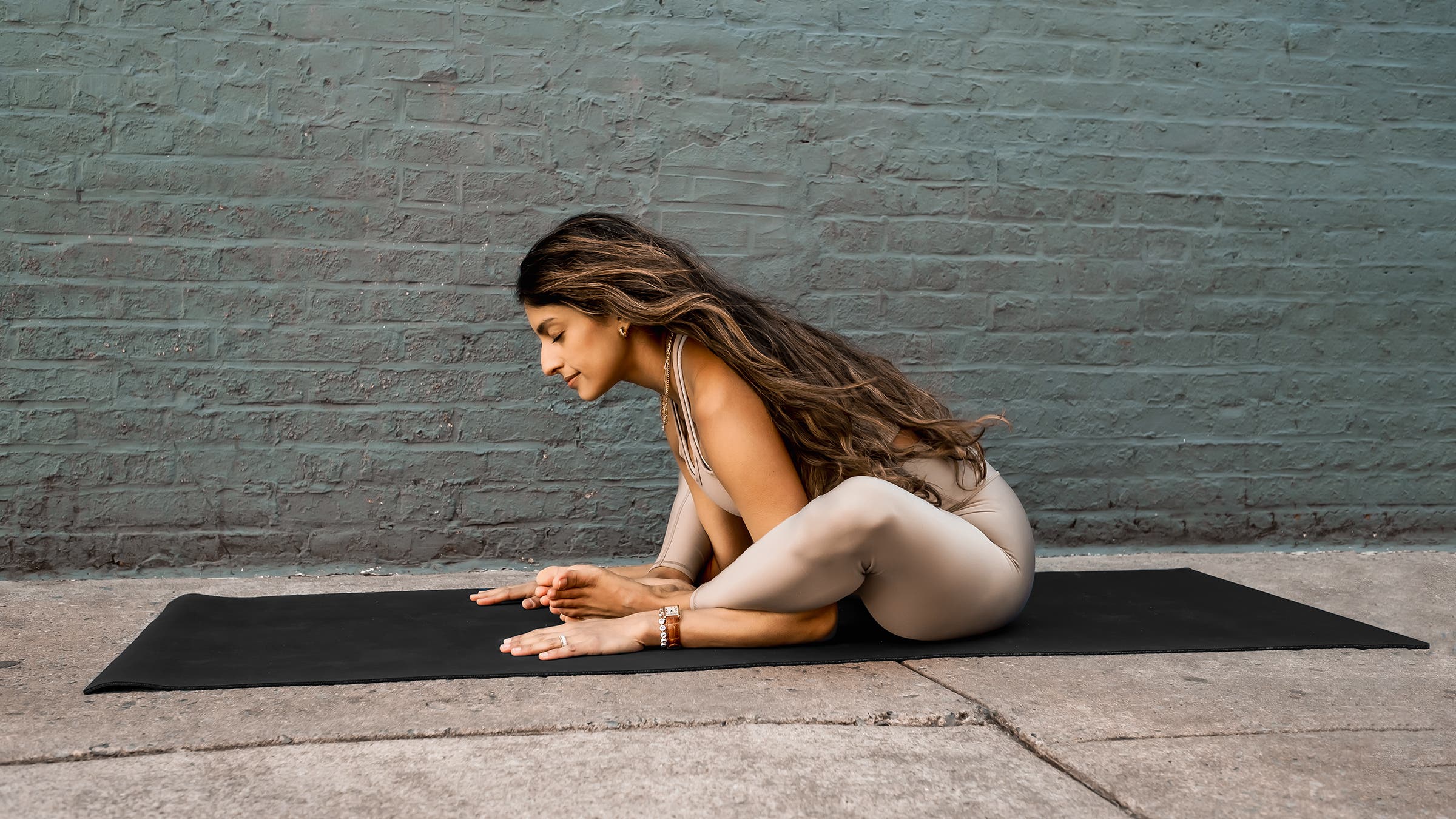
Rest your hands on your feet and turn the bottoms of your feet upwards. If you want, you can then slide your forearms underneath your shins and place your palms on your mat. Or come to whatever expression of the pose feels natural and expressive for you.
